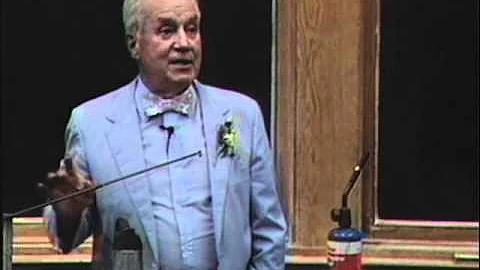Robert W Pond
age ~98
from Columbus, MT
- Also known as:
-
- Robert J Pond
- Robt W Pond
- Rob Pond
- Phone and address:
-
4 Quinn Coullee Rd, Columbus, MT 59019
406 322-6260
Robert Pond Phones & Addresses
- 4 Quinn Coullee Rd, Columbus, MT 59019 • 406 322-6260
- 818 Merry Ln, Greenwood, IN 46142 • 317 881-4818
- San Antonio, TX
- Ellicott City, MD
- PO Box 203, Columbus, MT 59019 • 406 581-9560
Work
-
Position:Machine Operators, Assemblers, and Inspectors Occupations
Education
-
Degree:Associate degree or higher
Isbn (Books And Publications)
-
Fundamentals Of Statistical Quality Control
view source -
Author:Robert J. Pond
-
ISBN #:0023960345
-
Introduction To Engineering Technology
view source -
Author:Robert J. Pond
-
ISBN #:0023960418
-
Introduction To Engineering Technology
view source -
Author:Robert J. Pond
-
ISBN #:0023960310
-
Introduction To Engineering Technology
view source -
Author:Robert J. Pond
-
ISBN #:0130310387
-
Introduction To Engineering Technology
view source -
Author:Robert J. Pond
-
ISBN #:0131115030
-
Introduction To Engineering Technology
view source -
Author:Robert J. Pond
-
ISBN #:0138548129
-
Introduction To Engineering Technology
view source -
Author:Robert J. Pond
-
ISBN #:0675210038
-
Follow The Blue Blazes: A Guide To Hiking Ohio'S Buckeye Trail
view source -
Author:Robert J. Pond
-
ISBN #:0821414895
Name / Title
Company / Classification
Phones & Addresses
Pond, Robert
Contractors - General
Contractors - General
913 Ellendale Dr, Towson, MD 21286
410 321-7886
410 321-7886
President
M-Structures Inc
Business Consulting Services Mfg Misc Fabricated Metal Products
Business Consulting Services Mfg Misc Fabricated Metal Products
913 Ellendale Dr, Baltimore, MD 21286
410 823-3847
410 823-3847
Texas Thin Stone LLC
Resumes

Robert Pond
view sourceWork:
Free Lance Director Theatre 2012 - 2012
Director Wantabe
Director Wantabe
Skills:
Teaching
Editing
Theatre
Public Speaking
Film
Social Media
Research
Customer Service
Acting
Microsoft Office
Editing
Theatre
Public Speaking
Film
Social Media
Research
Customer Service
Acting
Microsoft Office

Robert Pond
view source
Robert Pond
view source
Robert Pond
view source
Registered Nurse
view sourceWork:
Registered Nurse

Robert Pond
view sourceLocation:
United States

Robert Pond
view sourceLocation:
United States
Us Patents
-
Microelectromechanical Isolating Circuit
view source -
US Patent:6975193, Dec 13, 2005
-
Filed:Mar 25, 2003
-
Appl. No.:10/397096
-
Inventors:Michael J. Knieser - Fortville IN, US
Richard D. Harris - Solon OH, US
Robert J. Pond - Doylestown OH, US
Louis F. Szabo - Broadview Heights OH, US
Frederick M. Discenzo - Brecksville OH, US
Patrick C. Herbert - Mentor OH, US
Robert J. Kretschmann - Bay Village OH, US
Mark A. Lucak - Hudson OH, US -
Assignee:Rockwell Automation Technologies, Inc. - Mayfield Heights OH
-
International Classification:H01N051/22
-
US Classification:335 78, 200181
-
Abstract:Microelectromechanical (MEMS) switches are used to implement a flying capacitor circuit transferring of electrical power while preserving electrical isolation for size critical applications where transformers or coupling capacitors would not be practical. In one embodiment, the invention may be used to provide input circuits that present a programmable input impedance. The circuit may be modified to provide for power regulation.
-
Metal Composites With Fly Ash Incorporated Therein And A Process For Producing The Same
view source -
US Patent:48880540, Dec 19, 1989
-
Filed:Jan 21, 1988
-
Appl. No.:7/147359
-
Inventors:Robert B. Pond - Westminster MD
-
International Classification:C22C 2912
-
US Classification:75234
-
Abstract:The invention is directed to a process for producing metal composites from low-cost earth products and articles manufactured thereby. Fly ash from burned coal and oil is bonded with low-melting metals or alloys to produce economical composite materials with modified strength, conductivity and wear resistance.
-
Process For Modifying The Surface Of Metal Or Metal Alloy Substrates And Surface Modified Products Produced Thereby
view source -
US Patent:48527890, Aug 1, 1989
-
Filed:Dec 15, 1988
-
Appl. No.:7/284707
-
Inventors:Robert B. Pond - Westminster MD
-
International Classification:B23K 2300
-
US Classification:228198
-
Abstract:A tightly bonded abrasion resistant surface layer is formed on, or a binding layer is formed therebetween, reactive metal or metal alloy substrates. A powdered mixture of oxides, at least one of the oxides having a heat of oxidation lower than the heat of oxidation of the oxide of the substrate, is disposed on the substrate. The substrate with the oxide powder disposed thereon is heated to a temperature lower than the melting point or solidus temperature of the substrate. The powdered mixture of oxides preferably comprises fly ash. An abrasion resistant surface layer may be bonded to a structural part by mixing the powdered mixture of oxides with powdered rective metal or reactive metal alloy, disposing the resultant mixture on the part, and heating.
-
Method Of Forming A Filament Through Melt Extraction
view source -
US Patent:43265790, Apr 27, 1982
-
Filed:Jan 23, 1980
-
Appl. No.:6/114398
-
Inventors:Robert B. Pond - New Windsor MD
John M. Winter - New Windsor MD -
Assignee:National-Standard Company - Niles MI
-
International Classification:B22D 1106
-
US Classification:164461
-
Abstract:A method of forming filaments, particularly continuous strips, sheets or the like, by rotating a chill wheel against a meniscus of molten material formed about the periphery of an elongate orifice through which the molten material is fed under uniform fluid pressure along the longitudinal axis of the orifice. Filaments of different widths, thicknesses and composite structures are extracted by utilizing single or plural chill wheels in conjunction with plural orifices.
-
Method And Apparatus For Producing Filamentary Articles By Melt Extraction
view source -
US Patent:41702573, Oct 9, 1979
-
Filed:Mar 3, 1978
-
Appl. No.:5/883172
-
Inventors:Robert B. Pond - Westminster MD
John M. Winter - New Windsor MD
Bruce S. Tibbetts - Taneytown MD -
Assignee:National Standard Company - Niles MI
-
International Classification:B22D 1106
-
US Classification:164 87
-
Abstract:A method and apparatus for producing filamentary articles from an open bath of molten material. A quench wheel having a peripheral chill surface is rotated upon the surface of a portion of the bath provided with a baffle that defines a puddle of molten material free from fluid turbulence, thereby permitting high production rates and precise control of product configuration.
-
Process For Modifying The Surface Of Metal Or Metal Alloy Substrates And Surface Modified Products Produced Thereby
view source -
US Patent:48816817, Nov 21, 1989
-
Filed:Sep 13, 1988
-
Appl. No.:7/243608
-
Inventors:Robert B. Pond - Westminster MD
-
International Classification:B23K 2300
-
US Classification:228198
-
Abstract:A tightly bonded abrasion resistant surface layer is formed on, or a binding layer is formed therebetween, reactive metal or metal alloy substrates. A powdered mixture of oxides, at least one of the oxides having a heat of oxidation lower than the heat of oxidation of the oxide of the substrate, is disposed on the substrate. The substrate with the oxide powder disposed thereon is heated to a temperature lower than the melting point or solidus temperature of the substrate. The powdered mixture of oxides preferably comprises fly ash. An abrasion resistant surface layer may be bonded to a structural part by mixing the powdered mixture of oxides with powdered reactive metal or reactive metal alloy, disposing the resultant mixture on the part, and heating.
-
Chill Block Melt Spinning Apparatus
view source -
US Patent:51881683, Feb 23, 1993
-
Filed:Aug 2, 1991
-
Appl. No.:7/739656
-
Inventors:Robert B. Pond - Westminster MD
-
Assignee:Marvalaud, Inc. - Westminster MD
-
International Classification:B22D 1106
-
US Classification:164479
-
Abstract:A chill block melt spinning apparatus produces flake-type powder of the smallest magnitude by centrifugal disintegration of molten metals and alloys. Molten metal or alloy is delivered to a rotating cup which centrifugally forces the metal to exit the cup tangentially in a sheet which breaks up into streams and then into a series of droplets. Rotating chill cylinders are radially spaced from the rotating cup. The cylinders receive the streams or droplets of semi-solidified metal and provide a fresh surface for each droplet to chill the droplets, forming ultra fine flakes while deflecting the flakes downward into a collecting area. The cylinders have a concave outer surface which corresponds to the shape of the rotating cup to provide an equidistant travel path from the rotating cup to a deflection contact surface for the radially travelling droplets.
-
Process For Modifying The Surface Of Metal Or Metal Alloy Substrates And Surface Modified Products Produced Thereby
view source -
US Patent:50064142, Apr 9, 1991
-
Filed:Dec 15, 1988
-
Appl. No.:7/284940
-
Inventors:Robert B. Pond - Westminster MD
-
Assignee:Marvalaud, Incorporated - Westminster MD
-
International Classification:B05D 502
-
US Classification:428469
-
Abstract:A tightly bonded abrasion resistant surface layer is formed on, or a binding layer is formed therebetween, reactive metal or metal alloy substrates. A powdered mixture of oxides, at least one of the oxides having a heat of oxidation lower than the heat of oxidation of the oxide of the substrate, is disposed on the substrate. The substrate with the oxide powder disposed thereon is heated to a temperature lower than the melting point or solidus temperature of the substrate. The powdered mixture of oxides preferably comprises fly ash. An abrasion resistant surface layer may be bonded to a structural part by mixing the powdered mixture of oxides with powdered reactive metal or reactive metal alloy, disposing the resultant mixture on the part, and heating.
Classmates

Robert R. Pond,Jr. (Pond)
view sourceSchools:
Rosa G. Maddock Elementary School Burbank IL 1979-1982, Harry E. Fry Elementary School Burbank IL 1982-1983
Community:
Brian Dunne, Gerald Braasch, Nancy Tyeptanar

Robert Pond
view sourceSchools:
Gulf Coast Academy Mobile AL 1977-1981
Community:
Andrea Jones, Kevin Jordan, Catherine Busby

Robert Pond
view sourceSchools:
Noble High School Wabash IN 1952-1954
Community:
Carol Slonaker, Terry Tyner, Eleanor Davis

Robert Pond
view sourceSchools:
Burr & Burton Academy Manchester VT 1956-1960
Community:
Louis Lorenzo

Robert Pond
view sourceSchools:
Bayside Secondary School Bayside Morocco 1970-1974
Community:
Geoff Ridder, Deb Greatrix, Charlene Pearson

Robert Pond
view sourceSchools:
Whiteface High School Whiteface TX 1962-1966
Community:
Bobby Stegall, Eunice Campbell

Robert Pond
view sourceSchools:
Fort Salonga Elementary School Northport NY 1997-2001
Community:
Deborah Clase, Jessie Diaz, Fritz Roemer, Howard Good, Thomas Fabb, Susan Impellizzeri

Robert Pond
view sourceSchools:
River Oaks High School Ft. Worth TX 1978-1982
Community:
Mike Moore, Brandy Walls, Porter Cox, Dwayne Gilley, Ruben Jimenez, Marcy Crain
Googleplus

Robert Pond

Robert Pond

Robert Pond
Plaxo

Robert Pond
view sourcePlano, TXVice President at Bowne of Dallas Past: Vice President at Merrill Corporation

Robert Pond
view sourceBTI
Youtube

Robert Pond
view source
Robert Pond
view source
Robert Pond
view source
Robert Pond
view source
Robert Pond
view source
Robert William Pond
view source
Robert Pond
view source
Robert Pond
view sourceMyspace
Get Report for Robert W Pond from Columbus, MT, age ~98









